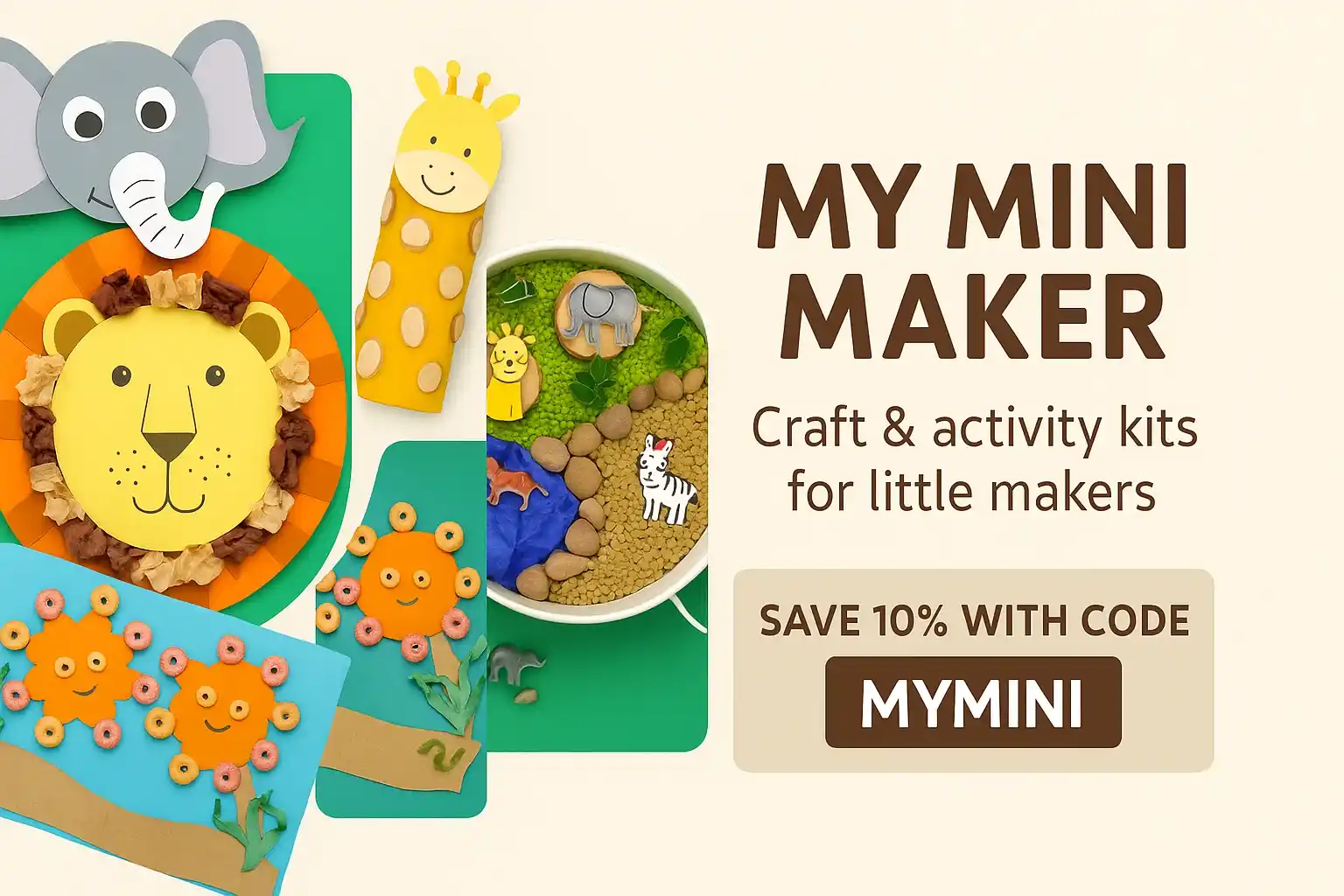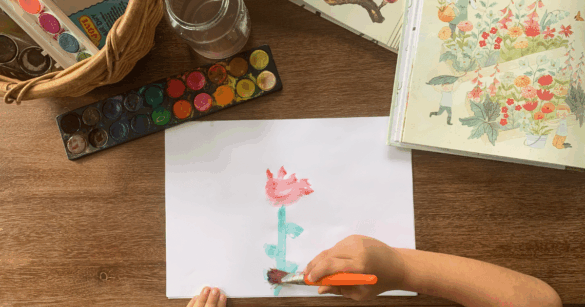Sparking Creativity: Morning Invitations for Kids
Table of Contents
- Sparking Creativity: Morning Invitations for Kids
- The Benefits of Independent Creative Play
- Crafting Effective Morning Invitations
- Inspiring Invitation Ideas
- Creating a Creative Environment
- The Power of the Morning Invitation
- Building a Versatile Art Toolkit
- A Spring-Inspired Invitation to Create
- Beyond the Setup: Fostering a Creative Mindset
- The Power of an Accessible Creative Hub
- Beyond Storage: Designing for Inspiration
- Extending the Creative Flow: Morning Invitations & Beyond
As parents, we all desire to nurture our children’s innate creativity. It’s a fundamental skill that fosters problem-solving, emotional expression, and a lifelong love of learning. But how do we consistently encourage this creativity amidst the daily hustle? One effective approach is through “morning invitations” – thoughtfully prepared activities that beckon children to explore, create, and imagine, all while offering parents a moment of peaceful respite.
Today’s homes are often filled with stimulating toys and scheduled activities, but sometimes the most powerful learning happens when children are given open-ended opportunities to direct their own play. These invitations aren’t about elaborate setups or Pinterest-perfect displays; they’re about providing a gentle nudge towards creative exploration.
The Benefits of Independent Creative Play
Before diving into specific ideas, it’s important to understand why these invitations work. Independent creative play offers a wealth of benefits for children, including:
Enhanced Problem-Solving Skills: When children are free to experiment and build, they naturally encounter challenges and learn to overcome them.
Boosted Confidence: Successfully completing a creative project, even a simple one, builds self-esteem and a sense of accomplishment.
Emotional Expression: Art, music, and imaginative play provide healthy outlets for children to process their emotions and express themselves.
Development of Fine Motor Skills: Activities like painting, sculpting, and building with small objects help refine hand-eye coordination and dexterity.
Cultivating Imagination: Open-ended play encourages children to think outside the box, invent stories, and create their own worlds.
Crafting Effective Morning Invitations
The key to a successful morning invitation is simplicity. It doesn’t require a lot of materials or preparation. Here’s how to create invitations that will captivate your children:
Focus on Process, Not Product: The goal isn’t to create a masterpiece, but to enjoy the act of creating.
Keep it Open-Ended: Avoid giving specific instructions. Let your child lead the way and explore their own ideas.
Use Everyday Materials: You don’t need expensive art supplies. Recycled materials, natural objects, and household items can be just as inspiring.
Rotate Activities: Keep things fresh by changing the invitations regularly. This will keep your child engaged and prevent boredom.
Presentation Matters: A beautifully presented invitation can be more enticing. Arrange materials in a basket, on a tray, or on a dedicated art table.
Inspiring Invitation Ideas
Here are some specific ideas to get you started. Remember to tailor these to your child’s age and interests:
Nature Collage: Provide a basket of leaves, flowers, twigs, and other natural objects, along with glue and paper. Encourage your child to create a nature collage. This ties in beautifully with learning about the natural world – explore our guide to nature-based learning.
Botanical Exploration: Offer a book about plants or flowers (like Botanicum: Welcome to the Museum), along with drawing materials. Encourage your child to sketch their favorite plants or create their own botanical illustrations.
Gardening Theme: Provide seeds, soil, small pots, and watering cans. Let your child plant their own seeds and care for their growing plants. We are the Gardeners is a wonderful book to accompany this activity.
Fairy Garden Creation: Offer natural materials like moss, twigs, and small stones, along with miniature fairy figurines. Encourage your child to create a magical fairy garden. The Complete Book of Flower Fairies can spark their imagination.
Building Challenge: Provide a set of building blocks, LEGOs, or other construction materials. Challenge your child to build a tower, a house, or any other structure they can imagine.
Storytelling Props: Offer a basket of small toys, puppets, or figurines. Encourage your child to create their own stories and act them out.
Sensory Bin Exploration: Fill a bin with rice, beans, pasta, or other sensory materials. Add small toys, scoops, and containers for exploration.
Creating a Creative Environment
Morning invitations are a fantastic starting point, but fostering creativity also requires creating a supportive environment. This means:
Providing Dedicated Space: Designate a specific area for creative activities, even if it’s just a corner of a room.
Offering a Variety of Materials: Keep a rotating selection of art supplies, building materials, and other creative tools readily available.
Encouraging Exploration: Let your child experiment and make mistakes without fear of judgment.
Celebrating Effort, Not Perfection: Focus on the process of creating, rather than the final product.
Joining in the Fun: Occasionally participate in creative activities alongside your child. This will not only strengthen your bond but also inspire their imagination.
By incorporating morning invitations and fostering a creative environment, you can help your child unlock their full potential and cultivate a lifelong love of learning and self-expression.
Cultivating Creativity: Inspiring Artistic Exploration in Children
For parents seeking to nurture their children’s innate creativity, providing accessible and engaging art experiences is paramount. It’s not about creating masterpieces, but about fostering a love of exploration and self-expression. A simple yet effective method is to introduce “morning invitations” – thoughtfully arranged art setups that greet children each day, sparking their imaginations before the day even begins.
The Power of the Morning Invitation
The concept is beautifully straightforward: while children are asleep, prepare a small art station with a variety of materials. This isn’t a structured lesson, but rather an invitation to create. Children can engage immediately, revisit the setup later, or simply observe and absorb the possibilities. This approach respects their autonomy and allows creativity to unfold naturally. According to a recent study by the National Endowment for the Arts, children who regularly participate in artistic activities demonstrate improved problem-solving skills and increased emotional intelligence.
Building a Versatile Art Toolkit
A well-stocked art supply collection doesn’t need to be extensive or expensive. Focus on versatile materials that can be used in multiple ways. Consider these essentials:
Stockmar Block Crayons: These beeswax crayons offer vibrant color and a unique tactile experience.
Stockmar Modeling Wax: A pliable and non-toxic material perfect for sculpting three-dimensional forms.
Jovi Air Dry Clay: An easy-to-use clay that hardens without baking, ideal for younger artists.
Natural Earth Paint: Non-toxic, plant-based paints that offer a beautiful and sustainable option.
Ashford Wool for Felting: Soft and versatile wool for needle felting projects, allowing for detailed creations.
Needle Felting Equipment: A safe and engaging way to introduce textile art and create charming figures.
Don’t underestimate the power of found objects! Natural materials like leaves, twigs, and pebbles can add texture and inspiration to any art project. For more ideas on incorporating natural elements into art, explore our guide to nature-inspired art projects.
A Spring-Inspired Invitation to Create
Recently, my children have been captivated by the beauty of spring blossoms. Inspired by their enthusiasm, I created a morning invitation centered around flowers. I began by setting out a guided activity: needle felting flowers. This technique, while new to them, proved surprisingly accessible and allowed them to create delicate floral forms.
Alongside the guided activity, I provided a wealth of open-ended materials. I arranged a selection of books showcasing diverse floral illustrations and botanical drawings, offering visual inspiration. Then, I filled shallow bowls and plates with an assortment of petals – both freshly picked and carefully pressed flowers – encouraging them to experiment with texture and color.
This combination of guided exploration and free-form creativity allowed my children to express their unique perspectives and develop their artistic skills. It’s a testament to the power of simple materials and a nurturing environment. If you’re looking for more ways to encourage artistic expression, check out our article on developing creativity in children.
Beyond the Setup: Fostering a Creative Mindset
Remember, the goal isn’t to produce perfect artwork, but to cultivate a love of learning and self-expression. Encourage experimentation, embrace mistakes, and celebrate the process of creation. By providing a supportive and inspiring environment, you can help your children unlock their full creative potential.
Cultivating Creativity: Designing a Dedicated Art Space for Children
Providing children with readily available art and craft materials is profoundly beneficial, nurturing both their imaginative thinking and self-reliance. Often, bursts of inspiration strike at unexpected moments – and frequently when parents are occupied. Having a designated space stocked with supplies empowers children to independently explore their ideas and bring them to life.
The Power of an Accessible Creative Hub
A well-organized art area isn’t just about convenience; it’s about fostering a creative mindset. When materials are easily accessible, children are more likely to experiment, take risks, and develop their artistic skills. Consider the impact of a child spontaneously deciding to sculpt with clay or paint a vibrant landscape, all without needing to ask for assistance. This independence builds confidence and encourages sustained engagement with artistic pursuits.
Our family utilizes a repurposed kitchen pantry as our “Creative Station.” The shelves are perfect for storing paints, modeling compounds, various paper types, and other essential mediums. We even keep some of my own art supplies on the higher shelves, subtly demonstrating that creativity is a lifelong pursuit. This dedicated space minimizes mess in other areas of the house and provides a clear signal that this is a zone for imaginative play.
Beyond Storage: Designing for Inspiration
The key to a successful creative space isn’t just about storage; it’s about creating an environment that inspires. Think about incorporating elements that spark imagination. A small easel, a colorful rug, or a display of finished artwork can all contribute to a welcoming and stimulating atmosphere.
Consider the layout. Arrange materials in an organized yet inviting manner. Clear containers and labeled shelves make it easy for children to find what they need and put things away. A low table and comfortable seating encourage extended periods of creative exploration.
According to a recent study by the National Endowment for the Arts, children who participate regularly in arts activities demonstrate improved critical thinking skills and a greater sense of self-expression. Providing a dedicated space for creativity is an investment in their overall development.
Extending the Creative Flow: Morning Invitations & Beyond
The concept of “morning invitations” – small, thoughtfully arranged setups designed to spark creativity – is a fantastic way to encourage artistic engagement. These invitations can be as simple as a blank sheet of paper with a few colorful markers or a small bowl of playdough with some cookie cutters. The goal is to present a starting point that invites exploration and imaginative play.
But creativity shouldn’t be limited to mornings. Consider incorporating art into other parts of the day. After-school art invitations can provide a relaxing and engaging activity after a day of learning.
Here are some additional resources to inspire your own creative setups:
How to Set Up Creative Invitations for Kids: https://thetrendytype.com/how-to-set-up-creative-invitations-for-kids-each-morning/
10 Art Invitations to Create for Kids: https://thetrendytype.com/10-invitations-to-create-art/
5 Easy After School Art Invitations for Kids: https://thetrendytype.com/5-after-school-art-invitations-for-kids-easy-to-setup-in-under-5-minutes/
The Art of Strewing for Kids: https://thetrendytype.com/strewing/
* 10 Art Prompts for Kids to Foster Creativity: https://thetrendytype.com/art-prompts-for-kids/
Ultimately, creating a dedicated art space is about more than just providing materials; it’s about nurturing a lifelong love of creativity and empowering children to express themselves through art. And don’t forget to explore different art supplies for kids to keep things fresh and exciting!



